Best Lighting for Your Sauna: Safe, Stylish, and Sauna-Proof
The Complete Guide to Sauna Lighting: Safety, Science, and Serenity
Picture this: you step into your sauna after a long day, ready to unwind. The wood is warm, the air is steamy, but something's off—the lighting is too harsh, flickering, or worse, creating a sterile hospital vibe instead of a wellness sanctuary. The truth is, sauna lighting isn't just about seeing where you sit. It's about creating an environment that enhances relaxation, supports your wellness goals, and keeps you safe.
Get your lighting right, and you've created a spa-like oasis that makes every session feel therapeutic. Get it wrong, and you're dealing with melted fixtures, electrical hazards, and an experience that falls flat. With the global sauna market projected to reach $1.27 billion by 2030—driven largely by home wellness trends—more people than ever are discovering that lighting is a critical, often overlooked element of sauna design.
In this guide, we'll break down everything you need to know about sauna lighting: which types work best, the latest 2024 safety standards, how lighting affects your mood and recovery, and practical installation tips from real sauna owners. By the end, you'll know exactly how to light your sauna for maximum impact.
Why Sauna Lighting Requires Special Consideration
Your sauna isn't like any other room in your home. It's an extreme environment that puts every component to the test. Temperatures routinely climb to 160–212°F (70–100°C), and humidity levels can approach 100% in traditional steam saunas. Under these conditions, ordinary household lighting simply can't survive.
Standard LEDs and incandescent bulbs that work perfectly fine in your living room will degrade, warp, or fail completely—sometimes within just a few weeks of sauna use. The heat causes plastic housings to melt, electrical components to short out, and bulbs to burn out prematurely. Beyond durability concerns, there's also the safety factor: improper lighting in a high-heat, high-moisture environment poses real electrical risks.
That's why choosing sauna-specific lighting isn't optional—it's essential. The right fixtures are engineered to withstand extreme conditions while creating the ambiance that makes your sauna sessions truly restorative.
Understanding 2024 Sauna Lighting Safety Standards
Modern sauna lighting must meet stringent safety requirements that have evolved with both technology and our understanding of electrical safety in extreme environments. Here are the critical standards your lighting should meet:
IP Rating (Ingress Protection): Look for fixtures rated IP65 or higher. This certification means the light is fully protected against dust and water jets from any direction. For moderate-moisture areas, IP44 or IP54 may suffice, but IP65 is the gold standard for most sauna applications.
Heat Resistance: Your fixtures must withstand temperatures of 195–212°F (90–100°C) without material degradation. Quality sauna lights use ceramic, tempered glass, or stainless steel housings that won't warp or release harmful fumes under heat stress.
Electrical Protection: All sauna lighting circuits should include a Residual Current Device (RCD) with a 30 mA rating. This is now standard in 2024 safety codes and provides crucial protection against electrical shock in moist conditions.
Low-Voltage Systems: Many experts recommend 12V low-voltage LED systems for additional safety, especially in residential saunas. These systems minimize electrical risk while providing excellent illumination.
Proper Certification: Look for UL, ETL, CE, or RoHS certification marks. These indicate the fixture has been tested and approved for safety, quality, and environmental compliance.
Strategic Placement: Never install lights directly above sauna heaters. Wall-mounted fixtures should be positioned no higher than 3 feet from floor level for optimal safety and illumination.
Annual inspections of your sauna lighting—checking for cable fatigue, seal integrity, and any signs of discoloration—are recommended to maintain safety standards over time.
The Best Lighting Options for Your Sauna
Heat-Rated LED Lighting
LEDs have revolutionized sauna lighting, but there's a crucial distinction: standard LEDs will fail quickly in sauna conditions, while heat-rated LED systems are specifically engineered for extreme environments. The global heat-resistant LED market is projected to reach $9.22 billion in 2025, driven largely by demand for lighting that can handle high-temperature applications like saunas.
Modern heat-rated LEDs can withstand temperatures up to 176°F (80°C) and use specialized components that resist thermal degradation. They convert 95% of energy into light while losing only 5% as heat—making them incredibly efficient compared to traditional incandescent bulbs.
Pros: Energy-efficient (up to 75% less energy than incandescent), long lifespan (25,000+ hours), available in dimmable and color-changing models, low heat emission
Cons: Standard LEDs fail quickly—you must specifically purchase heat-rated models; higher upfront cost than traditional bulbs
Best for: Owners looking for efficient, long-lasting lighting with modern features and customization options
LED Strip Lights & Light Bars
For creating ambient, indirect illumination, LED strip lights can transform your sauna's atmosphere. However, cheap strips sold for general home use will deteriorate rapidly in sauna conditions. You need strips specifically rated for high heat and moisture, with proper IP ratings and sealed connections.
An even better option: glass fiber light bars from reputable manufacturers like Cariitti. These produce even, dot-free illumination and are specifically designed to thrive in high-heat sauna environments.
Pros: Creates elegant ambient glow, flexible placement options (under benches, along walls), excellent for indirect lighting
Cons: Standard strips fail quickly; quality fiber optic bars have higher initial cost
Best for: Creating mood lighting and avoiding harsh direct illumination
Recessed Downlights & Bulkhead Fixtures
If you prefer a clean, modern aesthetic, recessed or bulkhead fixtures offer sleek design with serious durability. These fixtures typically feature IP66 ratings (higher than the standard IP65) and are specifically engineered for moisture-heavy conditions.
Pros: Sleek, contemporary appearance; extremely durable; built for moisture and heat; professional finish
Cons: Require professional installation; higher upfront cost
Best for: New sauna builds or major renovations where you want a premium, finished look
Fiber Optic (Glass Fiber) Lighting Systems
This is the ultimate in sauna-proof design. Fiber optic systems don't generate heat inside the sauna at all. Instead, the light source remains outside the sauna chamber, sending illumination through heat-resistant glass fibers. These systems can handle temperatures up to 356°F (180°C)—far beyond what your sauna will ever reach—and require virtually no maintenance once installed.
Pros: Extreme durability, maximum safety (no electrical components in sauna), virtually maintenance-free, creates stunning starry ceiling or ambient wall effects
Cons: Higher initial investment; requires professional installation
Best for: High-end builds, owners prioritizing absolute safety and longevity, creating luxury spa atmosphere
Chromotherapy (Color Light Therapy) Systems
Chromotherapy lighting does more than just look beautiful—it's based on the principle that different wavelengths of colored light can influence physical and emotional states. While the scientific evidence is still evolving, early research is promising, and many sauna users report meaningful benefits.
A 2018 study in the Journal of Phototherapy and Laser Surgery found that chromotherapy, especially when combined with infrared therapy, helped reduce depression symptoms and improve sleep in individuals with stress-related conditions. The Lighting Research Center at Rensselaer Polytechnic Institute has documented how controlled light exposure affects circadian rhythms, mood regulation, and cognitive performance.
Common Chromotherapy Colors and Their Uses:
- Red: Energizes, improves circulation, supports detoxification and muscle recovery
- Blue: Calms the nervous system, reduces stress, may help lower blood pressure and promote deeper sleep
- Green: Balances emotions, reduces anxiety, supports general well-being
- Yellow: Uplifts mood, supports mental clarity and focus
- Orange: Stimulates enthusiasm, helps relieve fatigue and seasonal affective symptoms
- Purple: Enhances mindfulness and creativity, relieves mental fatigue
Pros: Therapeutic appeal, customizable to your mood and wellness goals, increasingly popular in premium saunas
Cons: Limited large-scale clinical research; not universally effective for everyone
Best for: Wellness enthusiasts interested in holistic healing; anyone looking to enhance the therapeutic aspects of sauna sessions
If you're intrigued by the wellness benefits of chromotherapy, explore our collection of infrared saunas that often feature integrated color therapy systems.
Backed by Research
A 2018 study published in the Journal of Phototherapy and Laser Surgery found that chromotherapy, especially when combined with infrared therapy, could help reduce symptoms of depression and improve sleep in individuals experiencing stress-related conditions. Other studies have pointed to the anti-inflammatory and pain-reducing effects of certain light wavelengths, particularly red and near-infrared light.
Additionally, the Lighting Research Center at Rensselaer Polytechnic Institute has documented how light exposure affects circadian rhythms, mood regulation, and cognitive performance—further supporting the use of controlled light environments in wellness routines.
While more large-scale clinical trials are needed to solidify chromotherapy's place in medical treatment, anecdotal evidence and early research suggest a meaningful benefit for many users.
Where to Find Chromotherapy-Enabled Saunas
Chromotherapy is now a standard feature in many high-end sauna models. These include:
- Full-spectrum saunas: Combine near, mid, and far infrared wavelengths with LED color therapy
- Infrared saunas: Often feature built-in chromotherapy panels
- Low EMF saunas: Offer wellness features with minimized electromagnetic exposure
Look for saunas that allow you to control color intensity and cycling modes so you can tailor your session to your needs.
How Lighting Influences Your Sauna Experience
Here's something most people don't realize: the lighting in your sauna isn't just aesthetic—it's a functional wellness element that directly impacts your mental and physical recovery.
Mental and Emotional Benefits
Creates Space for Meditation: Soft, warm-toned lighting naturally encourages deep breathing and inward focus. This environmental cue helps your brain shift into a meditative state more easily and sustain that state throughout your session.
Reduces Stress Hormones: Harsh, bright lighting can be mentally jarring and keep you in a state of alertness. Warm, ambient lighting supports your parasympathetic nervous system—the "rest and digest" mode—which is associated with decreased cortisol levels and improved emotional regulation.
Enhances Psychological Safety: The right lighting tone and placement can subconsciously make you feel safer and more comfortable, which is essential when you're vulnerable in a heated environment. This psychological comfort unlocks deeper relaxation and allows you to fully benefit from your session.
Physical Recovery Support
Regulates Heart Rate and Breathing: Research shows that warm, dim lighting can help slow your heart rate and deepen your breathing—both critical factors for post-exercise recovery and winding down before sleep.
Signals Your Body to Recover: Just as bright, cool lighting can energize you in a gym, warm sauna lighting cues your body to shift into recovery mode. After a workout, this transition optimizes muscle relaxation and promotes healthy blood flow to tired muscles.
May Support Cellular Healing: While more research is needed, users of red light and near-infrared chromotherapy systems often report faster recovery and reduced muscle soreness. These wavelengths may stimulate mitochondrial function, support anti-inflammatory responses, and assist in muscle regeneration.
The bottom line: lighting isn't decorative—it's a functional component of your wellness routine that amplifies the healing effects of heat therapy.
Smart Installation: Placement and Professional Tips
Even the best lighting will underperform (or fail entirely) if installed incorrectly. Here's how to get it right:
Avoid the Heat Zone: Never place lights directly above or immediately next to your sauna heater. This is the hottest area and will dramatically shorten the life of even heat-rated fixtures.
Choose Indirect Placement: Install lights under benches, behind backrests, along walls, or in ceiling corners. This creates a soft, relaxing glow that doesn't create harsh shadows or glare. Indirect lighting is easier on the eyes and contributes to a spa-like atmosphere.
Use Protective Covers: Even heat-rated fixtures benefit from tempered glass or wooden shields that diffuse heat and protect the fixture from direct steam exposure.
Install at Safe Heights: Wall-mounted fixtures should be no higher than 3 feet from the floor for optimal safety and effectiveness.
Hire a Licensed Electrician: This isn't a DIY project. Sauna lighting involves complex moisture-resistant wiring, proper grounding, RCD protection, and compliance with local electrical codes. A licensed professional ensures your system is both safe and effective.
Consider Smart Controls: Dimmable systems and color-changing controls let you customize your lighting based on time of day, mood, or specific wellness goals. Some modern systems integrate with smartphone apps for complete control.
Ready to create your ideal sauna environment? Browse our indoor sauna collection to find models designed with integrated lighting systems and modern wellness features.
Common Lighting Mistakes (and How to Avoid Them)
Learning from others' mistakes can save you time, money, and frustration. Here are the most common sauna lighting errors:
Using Regular Home Fixtures: This is the number one mistake. Standard light fixtures simply aren't built for sauna conditions. They will warp, melt, or short out—creating both a safety hazard and an expensive replacement problem. Always use sauna-rated or properly IP-rated fixtures.
Ignoring Dimmer Compatibility: Many people realize too late that their lighting system isn't compatible with a dimmer switch. Dimmers are essential for creating the right ambiance. Without this feature, your lighting may feel too harsh or clinical.
Placing Lights at Eye Level: Bright bulbs at eye level cause glare, eye strain, and discomfort. Always opt for indirect lighting positions that create a soft glow without interfering with your line of sight.
Skipping Protective Covers: Even sauna-rated lights benefit from vapor-proof covers or shields. These extend fixture lifespan and improve safety by reducing moisture exposure and preventing accidental contact.
Overlooking Strategic Placement: Poorly positioned lights create harsh shadows, get blocked by steam, or fail to illuminate the space evenly. Plan your lighting layout carefully before installation.
Prioritizing Style Over Safety: A beautiful fixture that isn't properly rated for sauna use is a liability, not an asset. Always verify product specifications, IP ratings, and temperature tolerances before purchasing.
Ready to elevate your sauna with healing light?
👉 Take the Sauna Quiz to find your perfect fit or explore InfiniteSauna’s Indoor Sauna Collection for models with integrated lighting systems.

Real User Insights from the Sauna Community
The sauna community is generous with hard-earned wisdom. Here's what experienced owners wish they'd known from the start:
"My cheap LED strips lasted exactly two weeks before the adhesive melted and they fell off. Don't make my mistake—invest in quality from the beginning." – Reddit user, r/Sauna
"Moving my lights from the ceiling to under the benches doubled their lifespan and created way better ambiance. Indirect lighting is the way to go." – Sauna Forum member
"I thought I could save money by skipping the electrician. Ended up having to redo the whole job after a safety inspection failure. Pay for professional installation the first time." – Homeowner testimonial
"The chromotherapy feature seemed gimmicky at first, but after using different colors for different moods, I'm a believer. Red after workouts, blue before bed—it genuinely makes a difference." – Wellness blog commenter
These insights underscore a consistent theme: quality matters, placement matters, and professional installation matters.
Energy Efficiency and Long-Term Value
Sauna lighting shouldn't inflate your energy bills or require constant maintenance. Here's how to maximize efficiency and minimize hassle:
LED Efficiency: Quality heat-rated LEDs use up to 75% less energy than incandescent bulbs and can last 25,000 hours or more. That translates to several years of regular use without replacement—making them both economical and environmentally friendly.
Fiber Optic Durability: While fiber optic systems cost more upfront, they're virtually maintenance-free once installed. Since the light source stays outside the sauna, there's no heat damage to components, meaning these systems can last a decade or more without intervention.
Smart System Benefits: Modern lighting systems with timers, motion sensors, or app-based controls reduce unnecessary energy use and extend bulb lifespan by ensuring lights are only on when needed.
Calculate Your Impact: Want to understand your sauna's total energy footprint? Consider the relationship between your lighting choices and your heater selection. If you're building or upgrading your sauna, explore our range of sauna heaters to find the most efficient options for your setup.
Maintenance Tips for Long-Lasting Performance
Proper maintenance extends the life of your sauna lighting and keeps your sessions safe:
Inspect Regularly: Check fixtures every few months for cracks, discoloration, moisture buildup, or seal failure. Catching problems early prevents bigger issues down the line.
Clean Gently: Wipe fixtures with a damp cloth only—never use harsh chemicals that could damage protective coatings or seals.
Replace Proactively: Don't wait for complete failure. If you notice dimming, flickering, or any signs of deterioration, replace bulbs or fixtures promptly to maintain safety standards.
Document Installation Details: Keep records of what fixtures you installed, when, and by whom. This makes troubleshooting and replacement much easier years down the line.
Frequently Asked Questions
Can I use regular LED lights in my sauna?
No. Standard LED lights are not designed for high-heat, high-humidity environments and will fail quickly—often within weeks. You must use heat-rated, sauna-specific LED lights with appropriate IP ratings (IP65 or higher) to ensure safety and durability.
What IP rating should sauna lights have?
Your sauna lights should have a minimum rating of IP65, which provides complete protection against dust and water jets from any direction. For traditional steam saunas with extreme moisture, IP66 offers even better protection. Lower ratings like IP44 or IP54 may work in dry saunas but aren't recommended for most applications.
Is chromotherapy scientifically proven to work?
The research is still evolving, but early studies show promise. A 2018 study in the Journal of Phototherapy and Laser Surgery found that chromotherapy combined with infrared therapy helped reduce depression symptoms and improve sleep in stress-related conditions. The Lighting Research Center at Rensselaer Polytechnic Institute has documented how light exposure affects circadian rhythms and mood regulation. While large-scale clinical trials are still needed, many users report meaningful benefits for relaxation, energy, and emotional well-being.
What's the safest type of sauna lighting?
Fiber optic lighting systems are the safest option because the actual light source stays outside the sauna, with only light traveling through heat-resistant fibers. This eliminates electrical risks inside the sauna chamber. Heat-rated LED systems with proper IP ratings and RCD protection are also very safe when correctly installed by a licensed electrician.
Where should I avoid placing sauna lights?
Never place lights directly above or next to the sauna heater—this is the hottest zone and will cause premature failure. Also avoid eye-level placement, which creates glare and discomfort. Instead, opt for indirect positions like under benches, behind backrests, or along walls at low heights.
Can LED lights handle sauna temperatures?
Yes, but only if they're specifically heat-rated for sauna use. Standard LEDs fail above 176°F (80°C). Sauna-rated LEDs are built with specialized components that can withstand temperatures up to 195°F (90°C) or higher, making them suitable for sauna environments when properly installed.
Do I need an electrician to install sauna lighting?
Absolutely. Sauna lighting installation involves moisture-resistant wiring, proper grounding, RCD circuit protection, and compliance with electrical codes. This isn't a DIY project—improper installation creates serious safety hazards. Always hire a licensed electrician with experience in sauna installations.
Are colored sauna lights worth the investment?
If you're interested in enhancing the mood and therapeutic aspects of your sauna sessions, chromotherapy lighting can be worthwhile. Many users report improved relaxation, better sleep, and faster recovery when using specific colors for different wellness goals. However, if you're primarily focused on basic illumination, standard warm white LEDs may be sufficient.
How long do sauna lights typically last?
This depends entirely on the type and quality. Heat-rated LED fixtures can last 25,000+ hours (several years of regular use). Fiber optic systems can last a decade or more since the light source is outside the sauna. Standard bulbs or cheap LED strips may fail within weeks or months. Investing in quality sauna-specific lighting pays off in longevity.
Does lighting color temperature affect my sauna experience?
Yes, significantly. Warm lighting (2700K-3000K) triggers parasympathetic relaxation, slows heart rate, and creates a calming atmosphere—ideal for stress relief and meditation. Cooler, bright white light (4000K+) increases alertness and can feel harsh in a relaxation setting. For optimal wellness benefits, choose warm-toned lighting.
Can I add smart controls to my sauna lighting?
Many modern sauna lighting systems are compatible with dimmer switches, smartphone apps, or smart home integration. These controls let you adjust brightness, change colors, set timers, and even sync lighting with music or heating cycles. If this feature interests you, verify compatibility before purchasing your lighting system.
What's the difference between fiber optic lights and LED lights for saunas?
Fiber optic lights place the actual light source outside the sauna, sending only light through heat-resistant fibers—making them extremely durable and virtually maintenance-free. They can handle temperatures up to 356°F. LED lights have the fixture inside the sauna and must be heat-rated to withstand up to 176-195°F. Fiber optics cost more initially but require almost no maintenance, while quality LEDs are more affordable upfront but may need eventual replacement.
Create Your Perfect Sauna Sanctuary
Lighting is far more than a functional detail—it's an essential element of your sauna experience that influences safety, ambiance, emotional well-being, and physical recovery. The right lighting transforms your sauna from a simple hot room into a wellness sanctuary that restores your body and uplifts your spirit.
Whether you're designing your first home sauna or upgrading an existing setup, thoughtful lighting choices make all the difference. By selecting heat-rated, properly certified fixtures and installing them strategically with professional help, you create a space that's both beautiful and built to last.
The sauna market is experiencing tremendous growth as more people discover the profound health benefits of regular heat therapy. With wellness trends emphasizing home spa experiences, chromotherapy integration, and smart controls, modern sauna lighting has never been more sophisticated—or more important.
Ready to elevate your sauna experience with expert lighting design? Explore our full collection of traditional saunas, hybrid models, and outdoor sauna options at InfiniteSauna, where wellness meets innovative design.
For more information on how lighting affects health and wellness environments, visit the Lighting Research Center at Rensselaer Polytechnic Institute, a leading authority on human-centric lighting research.
Your perfect sauna sanctuary is waiting—and it starts with the right light.

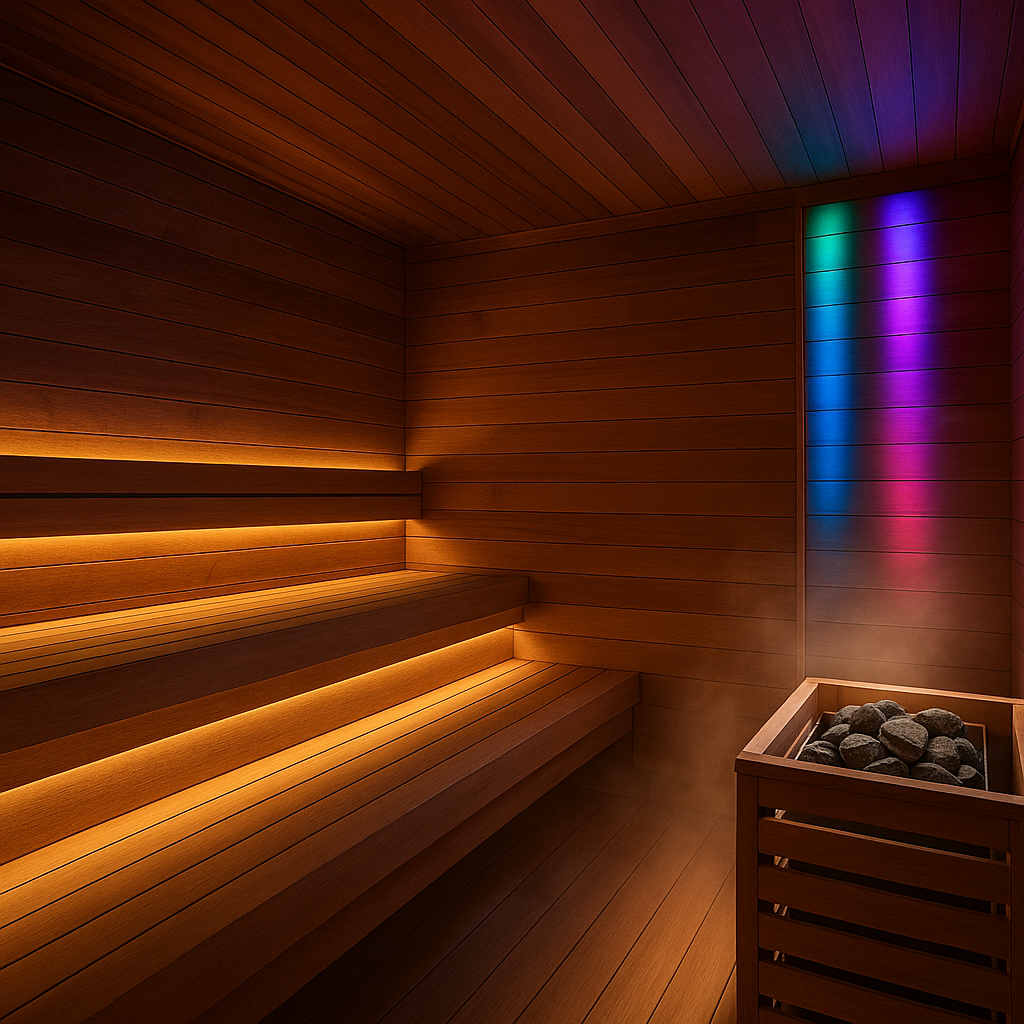
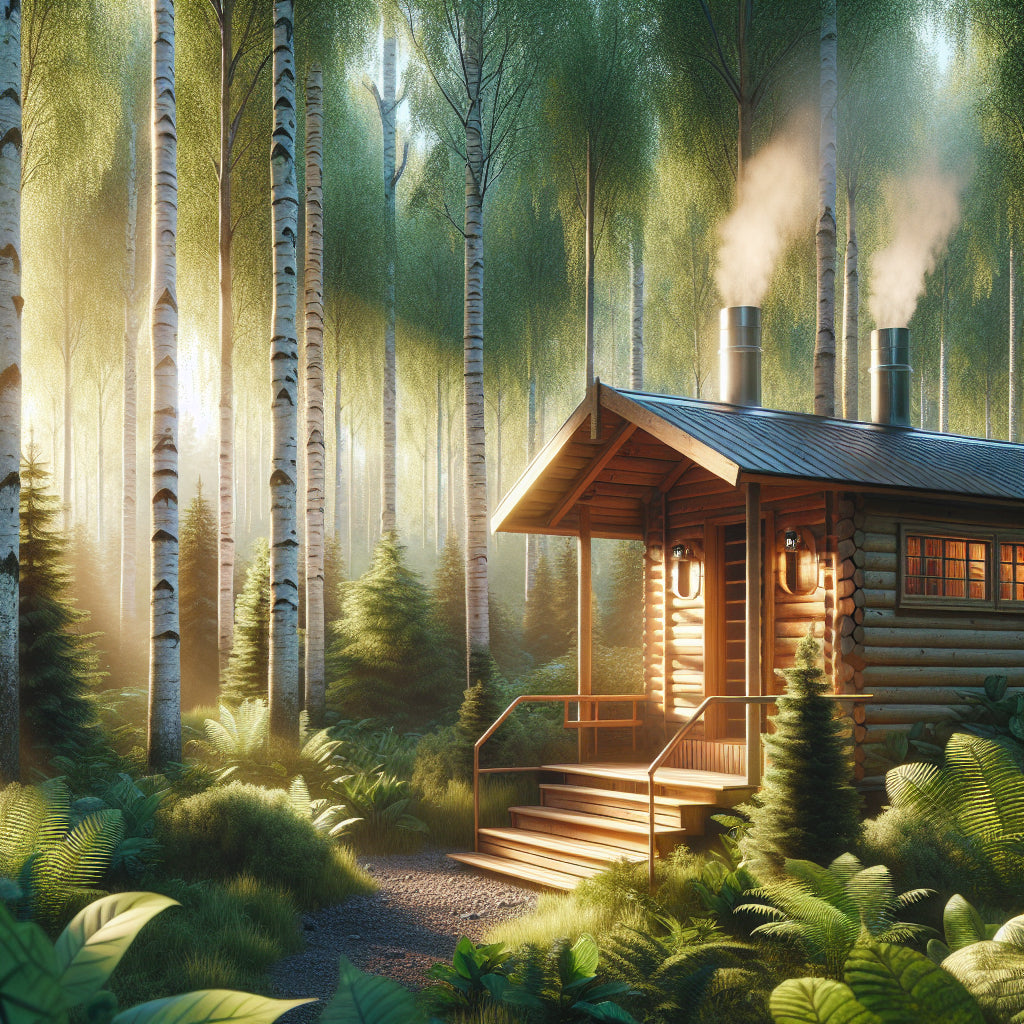
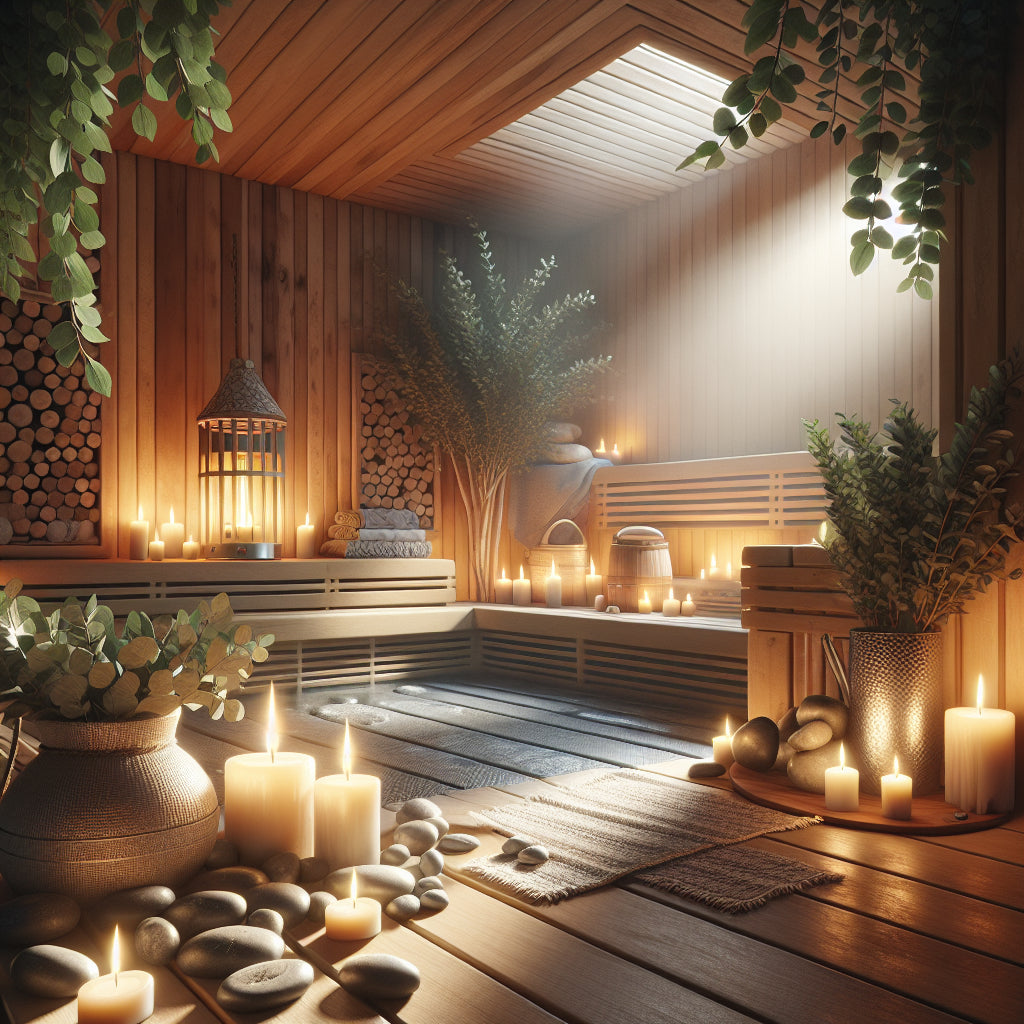
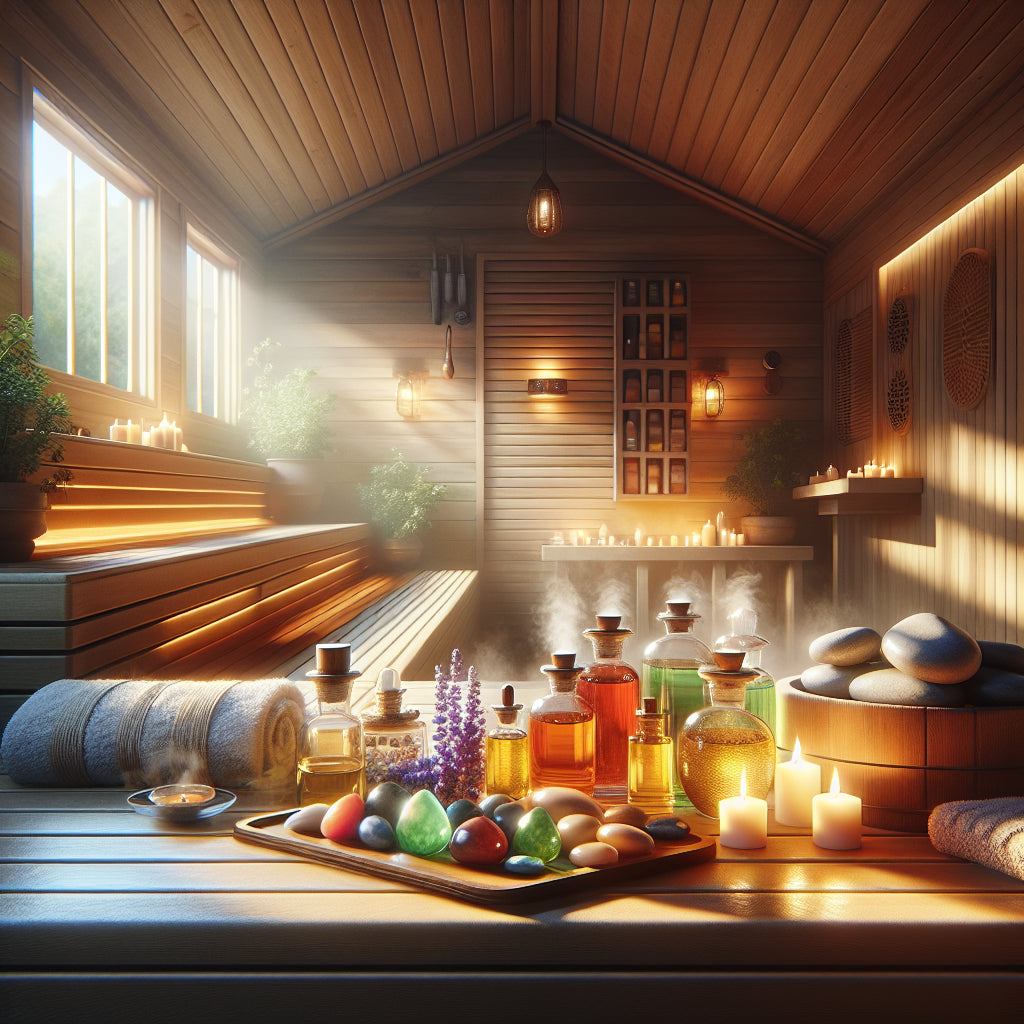
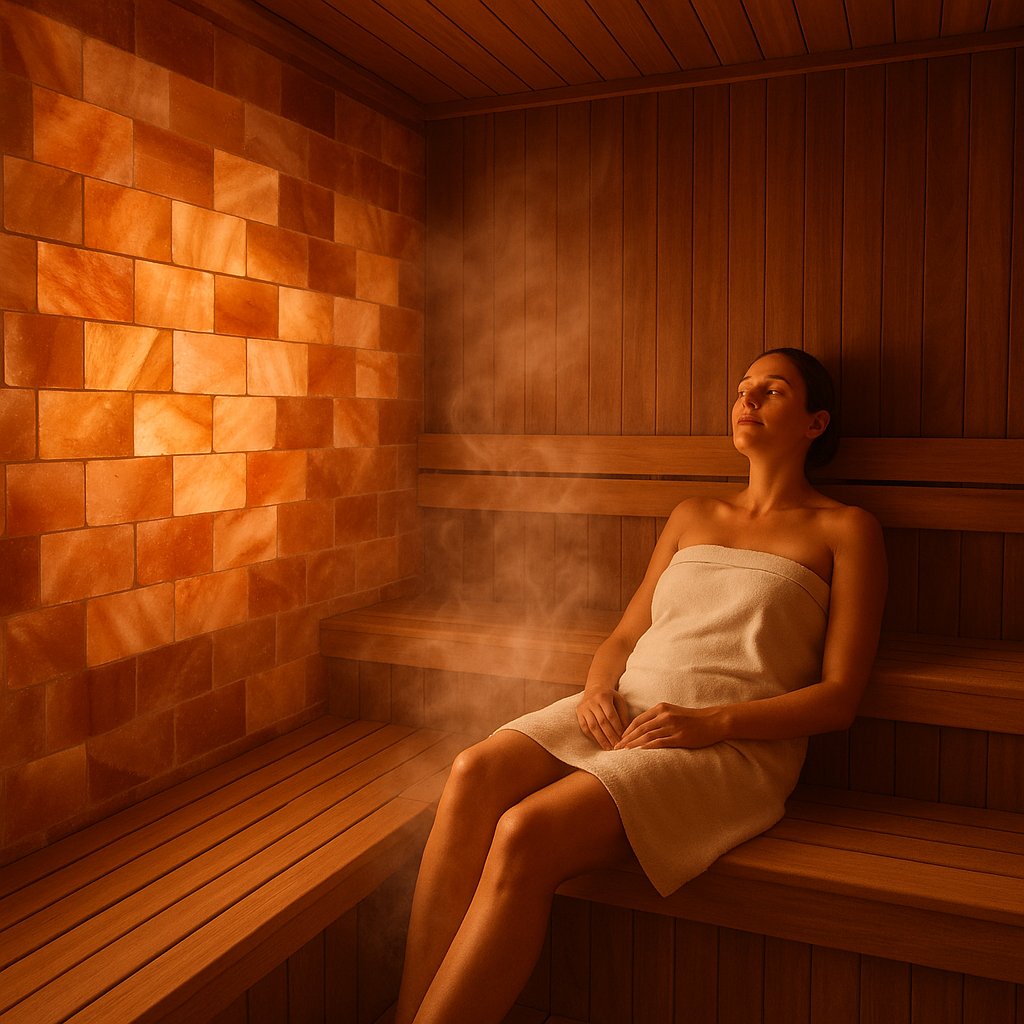

Leave a comment
This site is protected by hCaptcha and the hCaptcha Privacy Policy and Terms of Service apply.